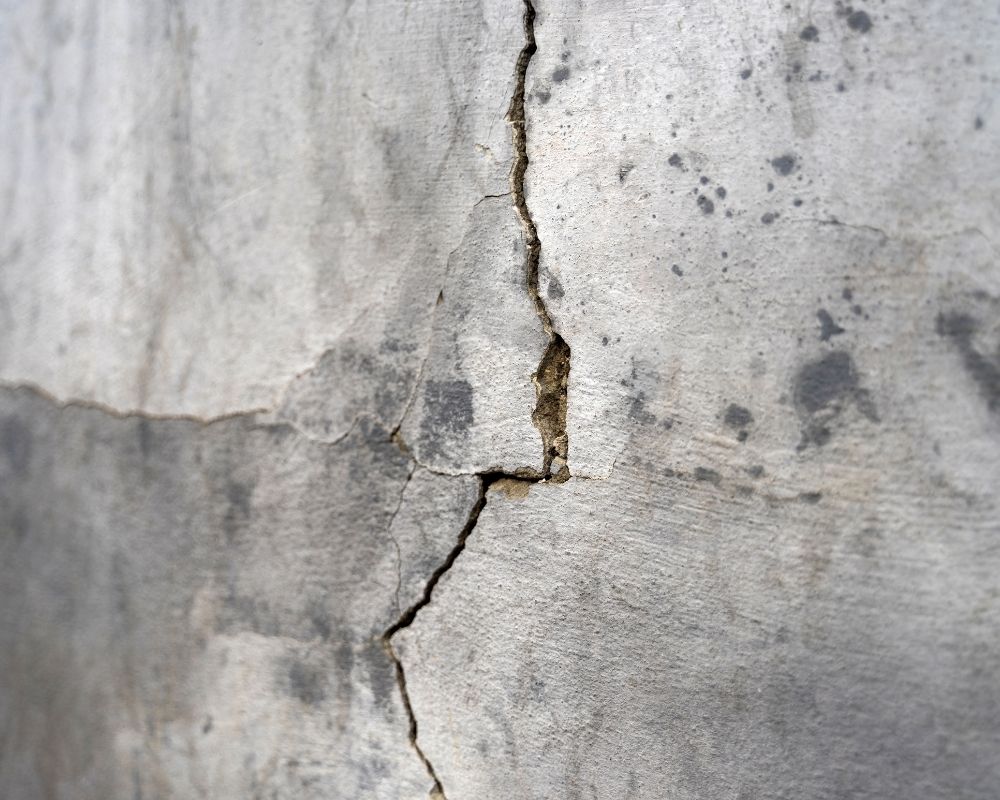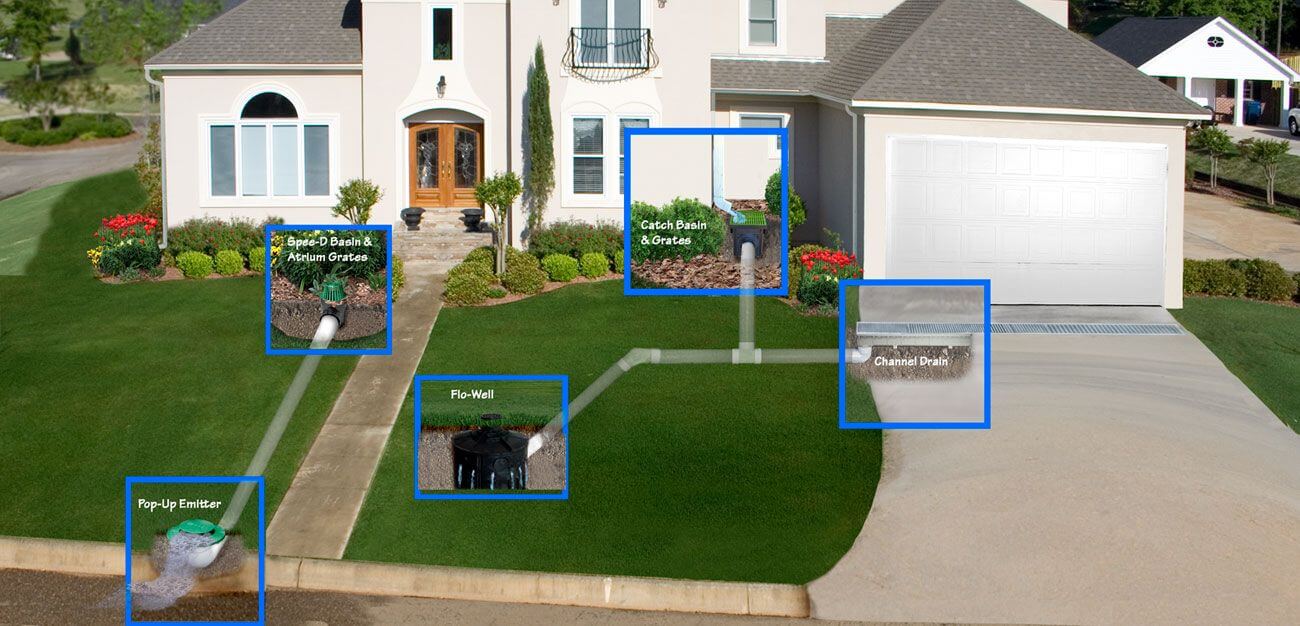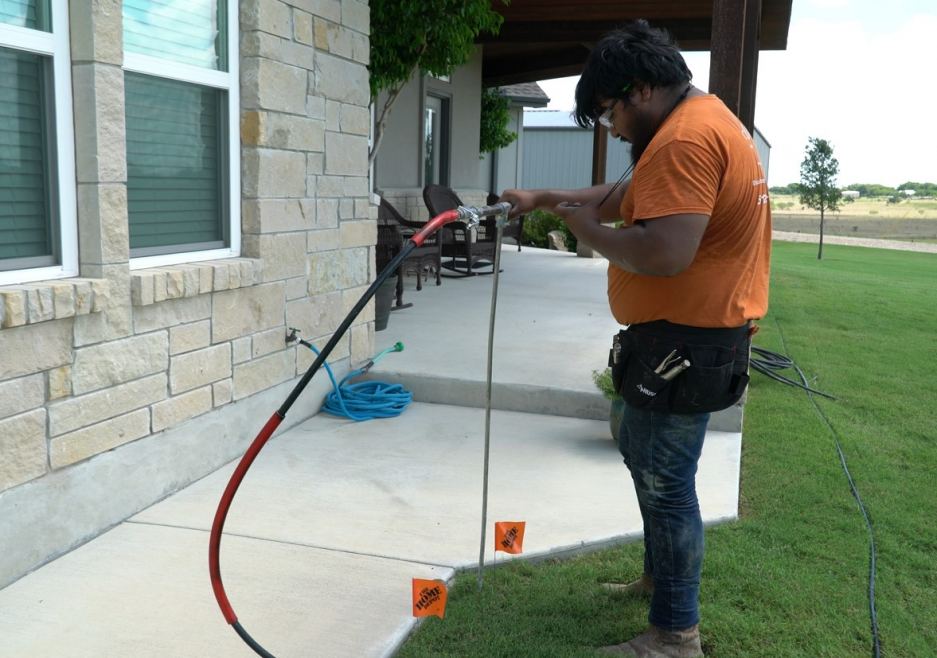Introduction: Safeguarding Your Home’s Foundation
The foundation is the backbone of your home, providing support and stability to the entire structure. Ensuring its integrity is critical to maintaining your home’s value, safety, and comfort. Structural foundation cracks are a common issue faced by homeowners, and understanding the various types, causes, and preventive measures and what are normal foundation cracks, can help you protect your home’s structural health.
In this comprehensive guide, we will delve into the world of structural foundation cracks, exploring their different forms and the reasons behind their occurrence. We will also discuss essential preventive measures and the significance of regular foundation inspections and maintenance. By gaining a deeper understanding of these critical aspects, you can take proactive steps to preserve your home’s foundation and safeguard your investment.
Armed with the knowledge provided in this article, you will be better equipped to recognize potential issues, implement preventive strategies, and maintain the structural integrity of your home’s foundation for years to come.
Identifying Types of Foundation Cracks: A Comprehensive Overview
Structural foundation cracks can take on various forms and appearances, influenced by their underlying causes and the severity of the issue. Being able to recognize and differentiate between the types of structural cracks is crucial for addressing the root problem and selecting the most effective repair solution. Let’s delve deeper into the most common types of structural foundation cracks and their characteristics:
Hairline Cracks
Hairline foundation cracks are very fine, superficial structural cracks that can emerge on the surface of concrete foundations during the curing process or as a result of minor settling. These structural cracks are usually less than 1/16 inch wide and do not typically indicate a significant structural issue.
Despite being small cracks, these structural cracks can lead to water infiltration and should be addressed. For the most part with concrete slabs, they won’t cause any damage but would be recommended to be patched to lessen further damage. The most common repair methods for a hairline crack include epoxy or polyurethane injections, which effectively seal the crack and prevent further damage.

Vertical Cracks
Vertical cracks run up and down, either straight or slightly zigzagging, and are commonly caused by the natural process of concrete shrinking as it cures or by minor foundation settling. While they are typically less severe than horizontal or diagonal cracks, vertical cracks can still compromise the waterproofing capabilities of your foundation. Repair methods for vertical cracks are similar to those used for hairline cracks, often involving epoxy or polyurethane injections, or in some cases, carbon fiber reinforcement for added stability.

Diagonal Cracks
These structural cracks are often the result of differential settling or expansive soils. This type of crack usually appear at a 30-75 degree angle, originating from the corners of windows, doors, or other openings in the foundation wall. cracks like this can vary in width and may widen over time, indicating ongoing foundation movement and potential structural issues. To properly address these cracks, it’s essential to assess the underlying cause and implement a repair solution tailored to the specific issue, such as piering, underpinning, or soil stabilization.

Horizontal Cracks
Horizontal foundation cracks are the most severe and concerning type of foundation crack. They usually appear as a result of excessive soil pressure, frost heaving, or expansive clay soils pushing against the foundation wall. Horizontal cracks can significantly compromise the integrity of your foundation and may lead to bowing or buckling walls if left unaddressed.
Due to the severity of horizontal cracks, immediate attention from a professional is required. Repair methods may include installing steel reinforcement beams, constructing a new retaining wall, or implementing soil stabilization techniques to alleviate pressure on the foundation wall.

By understanding the various types of structural foundation cracks and their characteristics, you can better evaluate your foundation’s health and take appropriate action to maintain its integrity and longevity.
Distinguishing Between Normal and Serious Foundation Cracks
Not all foundation cracks are created equal. Some cracks are considered normal and can be attributed to the natural settling of a building or the curing process of concrete. Other cracks, however, may signal severe structural issues requiring immediate attention.
Knowing the difference between normal and serious foundation cracks is crucial for determining the appropriate course of action. This section will provide an extensive and informative comparison between the two:
Normal Foundation Cracks
Normal foundation cracks are typically minor and do not pose a significant threat to the integrity of your home. These cracks can result from:
- Concrete shrinkage: As concrete cures, it naturally shrinks, which can lead to the development of hairline or vertical cracks.
- Minor settling: All foundations experience some degree of settling over time. Vertical or hairline cracks resulting from minor settling generally do not indicate serious structural issues.
These cracks are often narrow, less than 1/8-inch wide, and do not show signs of ongoing movement or widening. Repairing normal foundation cracks typically involves filling them with epoxy or polyurethane injections to prevent water infiltration and further damage.
Serious Foundation Cracks
Serious foundation cracks, on the other hand, may indicate serious structural problems and require immediate professional intervention. These cracks can result from:
- Differential settling: Uneven settling of a foundation can lead to diagonal cracks or stair-step cracks in masonry walls, signaling potential structural problems. Stair step cracks can be a problem that needs addressing if its a serious size.
- Expansive soils: Horizontal or diagonal cracks may develop due to pressure exerted by expansive soils, which can cause significant damage to your foundation.
- Frost heave: In colder climates, frost heave can result in horizontal cracks or foundation upheaval, posing a serious threat to your home’s structural integrity.
A serious foundation crack are often wider, show signs of ongoing movement, or are accompanied by other symptoms, such as sagging floors, misaligned doors or windows, or bulging walls. These cracks require prompt assessment and proper foundation crack repair by a foundation crack repair professional to prevent further damage and preserve your home’s structural stability.
By understanding the differences between normal and a serious foundation crack, you can make informed decisions about the appropriate course of action and protect your home’s foundation from potential harm. Regular foundation inspections and maintenance can help you identify and address issues early on, ensuring the longevity and integrity of your home’s foundation.
In-Depth Analysis of Common Causes of Foundation Cracks
Gaining a deeper understanding of the common causes of foundation cracks allows you to implement preventive measures and detect potential issues before they escalate. Here, we explore the most frequent causes of foundation cracks and provide a comprehensive analysis of each contributing factor:
Soil Settlement
Soil settlement refers to the natural process of the ground beneath a foundation adjusting to the weight of a structure. Foundations can settle over time due to variations in soil composition, moisture content, or compaction.
Uneven settling can result from poorly compacted fill soil, soil erosion, or soil consolidation under the weight of the structure. This process can lead to diagonal or vertical foundation cracks, which may widen over time and require intervention to preserve the structural integrity of your home.
Expansive Soils
Expansive soils, particularly those rich in clay content, can expand and contract with changes in moisture content, exerting pressure on your foundation and leading to cracking. During periods of heavy rain or excessive irrigation, the soil absorbs water, causing it to swell.
Conversely, during dry periods, the soil contracts as it loses moisture. This constant expansion and contraction can exert significant pressure on your concrete foundation wall, resulting in various types of a foundation crack, such as horizontal or diagonal cracks.
Frost Heave
In cold climates, the freezing and thawing of the ground can cause a phenomenon known as frost heave. When the temperature drops below freezing, the moisture in the soil expands as it freezes, causing the soil to lift. As the temperature rises again, the ice melts, and the soil contracts.
This cyclical process can push against your foundation, causing horizontal cracks or even lifting the foundation itself. Foundations in regions susceptible to frost heave require additional precautions, such as deeper footings or insulation, to mitigate the effects of this phenomenon.
Hydrostatic Pressure
Hydrostatic pressure refers to the force exerted by water at rest. High levels of groundwater, often due to poor drainage or heavy precipitation, can create pressure against your walls. This force can cause horizontal or diagonal cracking, as well as contribute to basement leaks and dampness.
Addressing hydrostatic pressure often requires implementing proper drainage systems, such as sump pumps, French drains, or exterior waterproofing, to reduce the water pressure against your concrete foundation wall.
Concrete Shrinkage
As concrete cures, it undergoes a natural process of shrinkage due to the evaporation of excess water in the mix. This shrinkage can cause the development of hairline or vertical cracks, particularly in larger, continuous concrete pours.
While these cracks are generally not indicative of serious structural issues, they can lead to water infiltration and should be addressed to preserve the longevity of your foundation. Proper concrete mix design, curing techniques, and the use of control joints can help minimize the effects of concrete shrinkage.
By examining common causes of a foundation crack, you can take appropriate preventive measures and remain vigilant in identifying potential issues with your foundation. Early detection and intervention are key to maintaining a strong and stable foundation for your home.
Comprehensive Preventive Measures for A Foundation Crack
Implementing a range of preventive measures can help safeguard your foundation from cracking and extend its lifespan. The following detailed steps will guide you in preserving the integrity of your foundation and maintaining a structurally sound home:
Proper Grading
Grading refers to the slope and contour of the land surrounding your home. Ensuring that the soil around your foundation slopes away from your home at a minimum incline of 6 inches within the first 10 feet is crucial for preventing water accumulation and reducing hydrostatic pressure.
Proper grading helps to direct surface runoff away from your foundation, reducing the risk of soil saturation, erosion, and foundation cracking. Periodic inspection and maintenance of the grading around your home can help identify and address potential issues before they escalate.

Drainage Systems
Effective drainage systems are vital for directing water away from your foundation and preventing soil saturation. Installing gutters and downspouts can capture roof runoff and channel it to a safe distance from your home.
Additionally, incorporating subsurface drainage solutions, such as French drains or footing drains, can help alleviate groundwater pressure and prevent basement leaks. Regular maintenance, including cleaning gutters and inspecting drainage pipes for clogs, is essential for ensuring the ongoing effectiveness of your drainage system.

Foundation Waterproofing
Waterproofing your foundation walls is an essential preventive measure for protecting against water infiltration and reducing the risk of cracking due to hydrostatic pressure. There are several foundation waterproofing methods, including exterior waterproofing membranes, interior sealants, and interior water drainage systems.
Exterior waterproofing involves applying a waterproof membrane or coating to the exterior foundation walls, creating a barrier against water infiltration. Interior sealants, such as waterproof paints or coatings, can be applied to the interior foundation walls to minimize dampness and condensation. Interior water drainage systems, including sump pumps and interior perimeter drains, can help manage water that enters your basement and prevent damage to your foundation.

Soil Stabilization
Stabilizing the soil around your foundation is crucial for minimizing the risk of foundation cracking due to soil settlement, expansive soils, or frost heave. Several soil stabilization techniques can be employed, such as compaction, soil replacement, or chemical treatments. Compaction involves using mechanical equipment to compress and consolidate the soil, reducing air and moisture content and increasing its load-bearing capacity.
Soil replacement may be necessary in cases where the existing soil is highly expansive or unsuitable for supporting your foundation. Chemical treatments, such as lime or cement stabilization, can alter the properties of the soil, improving its strength and stability.

By implementing these comprehensive preventive measures, you can effectively reduce the risk of a foundation crack and ensure a solid, stable foundation for your home. Regular inspection and maintenance of your foundation and its surrounding environment are essential for early detection and mitigation of potential issues.
Regular Foundation Inspections and Maintenance
Regular foundation inspections and maintenance play a vital role in preserving the health and stability of your home’s foundation. By keeping an eye on your foundation and addressing potential issues proactively, you can save time, money, and effort in the long run. This section will explore the importance of regular inspections, what to look for, and the benefits of ongoing maintenance:
The Importance of Regular Inspections
Conducting routine foundation inspections can help you identify and address issues before they escalate into costly structural repairs. By inspecting your foundation at least twice a year, preferably during spring and fall, you can detect early warning signs of foundation problems, such as cracks, water infiltration, or changes in the surrounding soil. You can also get a free estimate from your local foundation repair contractor. Explore the foundation Issues in Fort Worth.
What to Look For During Inspections
When inspecting your foundation, pay attention to the following potential signs of trouble:
- Visible cracks in the foundation walls, floors, or slabs
- Signs of water infiltration, such as dampness, mold, or mildew
- Gaps around doors or windows that indicate shifting or settling
- Sloping floors or leaning walls
- Cracks in exterior brickwork or masonry
- Soil erosion or changes in grading around your foundation
Benefits of Ongoing Maintenance
Implementing a regular maintenance plan for your foundation offers several benefits:
- Early detection of issues, allowing for prompt repairs and mitigation of damage
- Prevention of water infiltration and moisture-related problems, such as mold or mildew
- Preservation of your home’s structural integrity and overall value
- Reduced risk of costly foundation repairs or replacements
- Improved safety and comfort for you and your family
By incorporating regular foundation inspections and maintenance into your home care routine, you can help prevent foundation cracks and keep the longevity and stability of your foundation, protecting your investment and enhancing your quality of life.
Conclusion
In conclusion, understanding the various types of foundation cracks, their causes, and the preventive measures available can help you maintain a solid, stable, and secure foundation for your home. Timely detection and fixing foundation cracks are essential to prevent foundation cracks with further damage and costly structural repairs.
By ensuring proper grading, installing efficient drainage systems, waterproofing your foundation walls, and stabilizing the soil around your home, you can effectively minimize the risk of foundation cracking. Additionally, regular foundation inspections and maintenance can help identify potential issues early on and ensure the structural integrity of your home.
If you suspect foundation cracks or notice signs of potential issues, it’s crucial to consult with a professional foundation repair expert. They can accurately assess the situation, recommend the most appropriate repair solutions, and help you safeguard your home’s foundation for years to come. Remember, investing in proactive foundation care and maintenance is an investment in the long-term health and stability of your home.